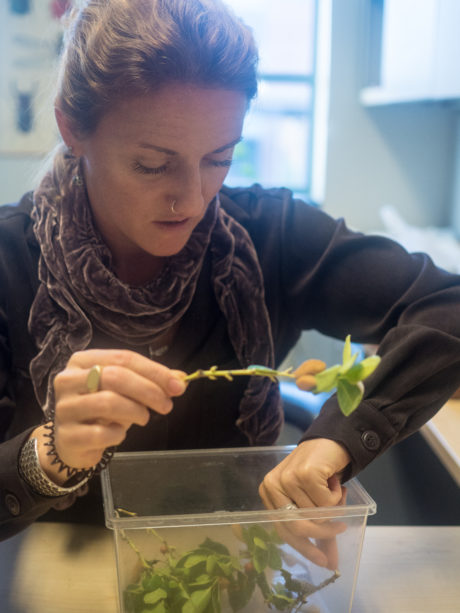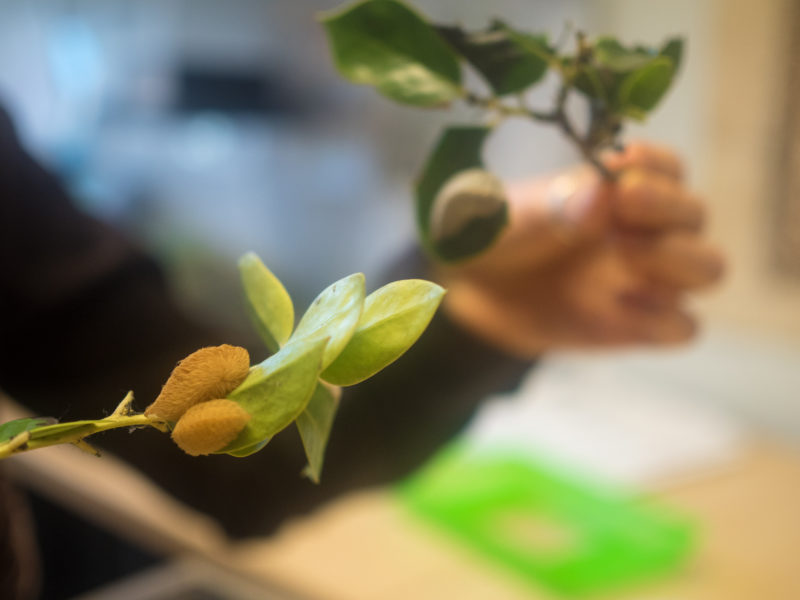There has been a recent outbreak of puss caterpillars, or asps, throughout San Antonio. Rebecca Hazen, visiting assistant professor of biology, gained firsthand knowledge of their spread on Friday while eating at a local restaurant on Saint Mary’s Street.
“These were crawling all over the patio of this restaurant, and it’s a busy restaurant,” Hazen said, pointing to the small colony she’s collected in her office. “All over the tables, chairs and ceiling and everywhere; these were on everything.”
Hazen gathered some of the painfully venomous caterpillars to prevent them from stinging other people on the patio. Hazen intends to return with some of her students who have volunteered to help with the collection.
“I’ve been working on caterpillars for a long time; it’s been part of my research for a long time, particularly caterpillar diversity, so I’ve worked with these a lot in terms of rearing them out like this,” Hazen said.
Because of the threat these caterpillars pose to the public, Hazen will have to euthanize the caterpillars she removed from the restaurant.
“The ecologist inside of me is like, just because they hurt us doesn’t mean they shouldn’t live, but because they are a public health issue … I’m probably going to euthanize them in the freezer,” Hazen said.

Hazen worries that the caterpillars’ harmless appearance will deceive others without her background knowledge.
“A lot of times in nature, things will have something called “˜aposematic coloration,’ where it’s like it’s advertising the fact that it’s dangerous. But these [caterpillars] are frustrating because they just look like little fluffy things that you would see anywhere. It doesn’t look like it would really hurt you,” Hazen said.
The caterpillars’ fuzzy exteriors hide the venomous barbs found underneath. When rubbed against skin, they produce reactions that range from a rash and severe burning sensations to shock and convulsions.
Before coming to Trinity University, Hazen lived in New Orleans and had dealt with another poisonous caterpillar that metamorphoses into buck moths.
“In New Orleans, people are really familiar with the idea of caterpillars being a scourge,” Hazen said.
Hazen wants to make sure that Trinity students are as just as familiar with the dangers that the local puss caterpillars pose. She encourages students to inform themselves on what to look for in order to prevent a painful sting.
“If you know what to look for, you can usually avoid it, and you can help other people avoid them,” Hazen said.
Because this is the end of the puss caterpillars’ season, there is an influx in caterpillar sightings. Hazen speculates that this sudden increase could be from the recent increase in rainfall.
“They’re ramping up for this last little time before it gets cold. It’s like their last hurrah,” Hazen said.
If you are stung by a puss caterpillar, there are steps you can take to treat yourself at home and speed up your recovery. First, use tape to remove the spines from the affected skin. Then thoroughly clean the area with soap and water. You can find more information on treatment at poison.org.







